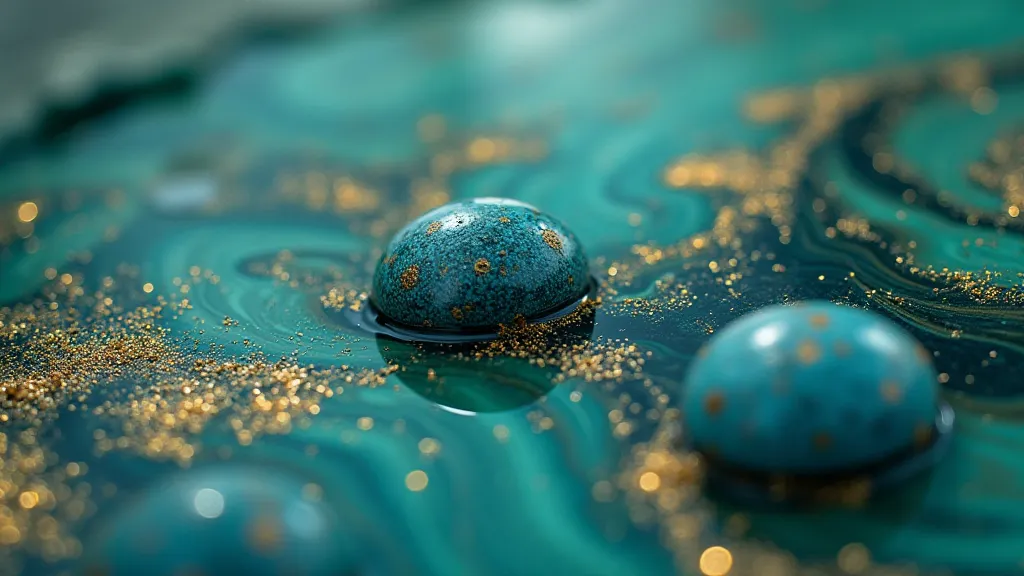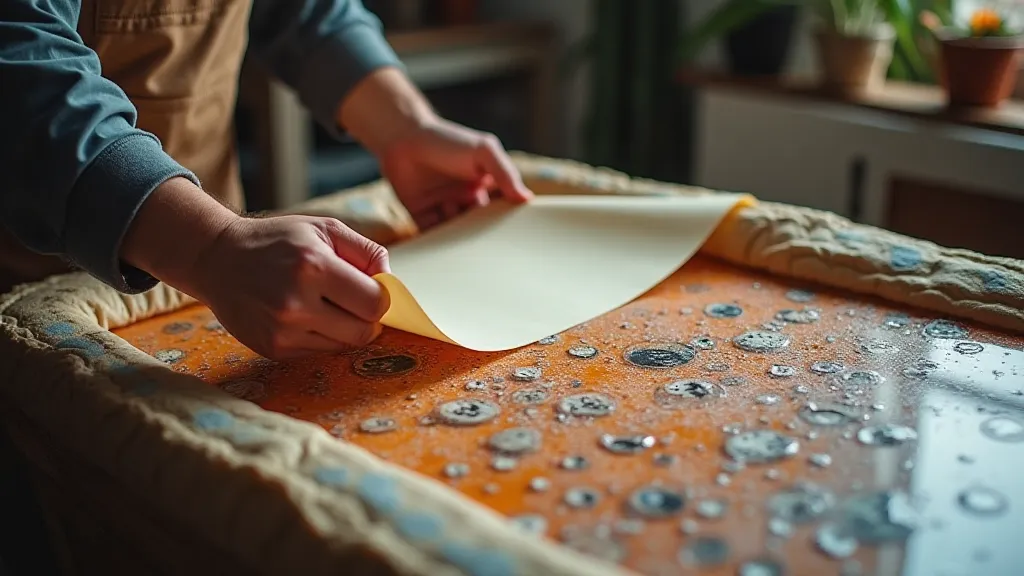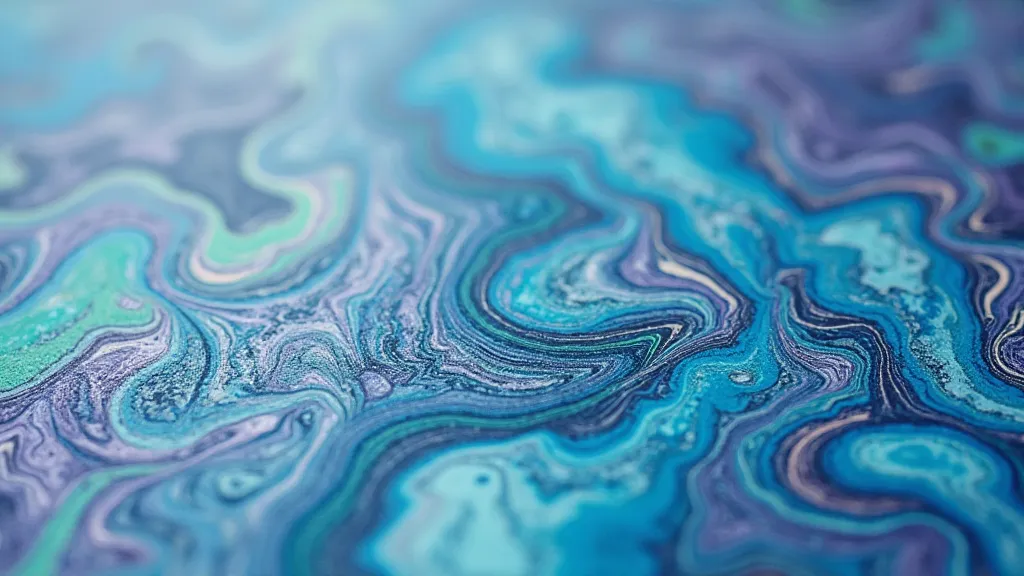The Unfolding Bloom: Embracing Emergent Narrative Structures
There’s a particular scent associated with antique accordions—a blend of oiled wood, aged leather, and the ghosts of melodies long past. It's a smell that conjures images of smoky cafes, travelling musicians, and a time when art felt more…organic. This feeling, I’m increasingly convinced, perfectly mirrors the beauty and profound lessons embedded within the art of paper marbling. Unlike many crafts, where the endpoint feels almost predetermined, paper marbling offers a chance to witness something genuinely unexpected, an emergent narrative born from pigment and water.
A History Etched in Swirls
The history of paper marbling is surprisingly intricate, tracing its roots back to ancient Persia and Turkey, where it was initially used to create decorative endpapers for illuminated manuscripts. Known as ebru in Turkey, the techniques were zealously guarded secrets passed down through generations. Later, it made its way to Europe, likely via trade routes, where it caught the attention of royalty and artisans alike. Each culture imprinted its own mark – Ottoman ebru often emphasizes incredibly detailed floral motifs, while European marbling tends toward bolder, more abstract patterns.
What struck me early on when researching ebru was the reverence afforded to the process itself. The marbler wasn't simply *making* something; they were engaging in a conversation with the materials, allowing the water and pigments to dictate the final outcome. It's a stark contrast to so much of our modern, goal-oriented world, where efficiency and predictability are often prized above all else. Think of the meticulous planning that goes into a structured novel, a predetermined architectural blueprint - and compare it to the joy of a child drawing freely with crayons.
The Dance of Pigment and Water
The basic principles of paper marbling are deceptively simple. You begin with a bath – a thickened water solution usually involving carrageenan, pectin, or other similar substances. Onto this bath, you gently float colors, typically inks or specialized marbling paints. These colors, being less dense than water, remain on the surface. Then comes the truly magical part: using combs, rakes, brushes, and even droplets, you manipulate the colors, creating swirling, hypnotic patterns. Finally, a sheet of paper is carefully laid upon the surface, lifting the design and transferring it.
My first attempts were, admittedly, disasters. Blotchy, muddy, and lacking any semblance of the elegant patterns I’m accustomed to seeing. I tried to *force* the patterns, to impose my will upon the liquid canvas. I wanted a perfect rose, a symmetrical mandala – something I could proudly display. But the water had other ideas. It pushed back, smudging my careful lines and creating unexpected blooms. It was frustrating at first, but then, slowly, I began to understand.
The key isn’t to control the water; it’s to learn to *respond* to it. To observe the way the colors interact, to anticipate their movement, and to adjust your techniques accordingly. It’s a lesson that extends far beyond the craft itself. It’s about embracing the unpredictable nature of creativity, of allowing the process to guide you, rather than rigidly adhering to a predetermined outcome.

More Than Just a Pattern
The beauty of paper marbling, I believe, lies not just in the final product, but in the journey. Each sheet is unique, a snapshot of a fleeting moment in time. No two patterns are ever the same, even when using identical colors and techniques. This inherent randomness is what makes the craft so captivating. It’s a tangible reminder that perfection isn’t always the goal. Sometimes, the most beautiful things are the imperfections, the unexpected deviations from the norm.
Consider the antique accordion, a complex instrument built with remarkable precision. Yet, the true character of an accordion isn't defined by its flawless mechanics. It's found in the worn bellows, the faded buttons, the subtle imperfections that tell a story of years spent in the hands of a musician, sharing music and laughter. Similarly, the unexpected bloom in a paper marbling design—a swirling eddy of color where you least expected it—is often the most compelling element. It's the mark of the process, the fingerprint of the water, the testament to the beauty of emergence.
This parallels how a story can unexpectedly evolve. A novelist might start with a clear narrative arc, a predetermined ending. However, the characters may surprise them, the plot may twist in unforeseen directions, and the final product will be richer and more compelling because of those unplanned deviations. Trying to force a narrative down a rigid path often leads to a story that feels contrived and lifeless. Allowing it to unfold organically, to embrace the unexpected turns, yields a story that resonates with truth and authenticity.
Restoration & Collecting: A Glimpse into the Past
For those interested in delving further into the world of paper marbling, both restoration and collecting offer unique avenues for appreciation. Antique marbled papers were frequently used for bookbinding, endpapers, and decorative arts. Preserving these fragile treasures requires patience and a delicate touch. Understanding the materials used – the types of inks, the paper itself – is essential for successful restoration.
Collecting marbled paper can be a fascinating hobby. The variations in style, color palettes, and techniques across different eras and regions provide a rich tapestry of artistic expression. Certain techniques, like the “French Curl” – a deliberate curl in the paper during the marbling process – are highly prized by collectors. Knowing the history of a piece, its provenance, adds another layer of depth to the appreciation.

Embracing the Emergent
The art of paper marbling isn't just about creating beautiful patterns; it’s about cultivating a mindset, a willingness to surrender control and embrace the unpredictable. It’s a microcosm of the creative process itself, a tangible representation of the beauty that emerges when we allow ourselves to be guided by intuition and observation.
The next time you face a creative challenge – whether it’s writing a novel, composing a piece of music, or simply tackling a design project – remember the paper marbler, patiently responding to the flow of water and pigment. Don’t be afraid to let go, to allow the unexpected to bloom. Because sometimes, the most extraordinary creations are born from embracing the emergent, the unplanned, the beautifully unpredictable.
And perhaps, like the scent of an antique accordion, the memory of that unfolding bloom will linger, a reminder that true artistry lies not in control, but in collaboration with the unexpected.






